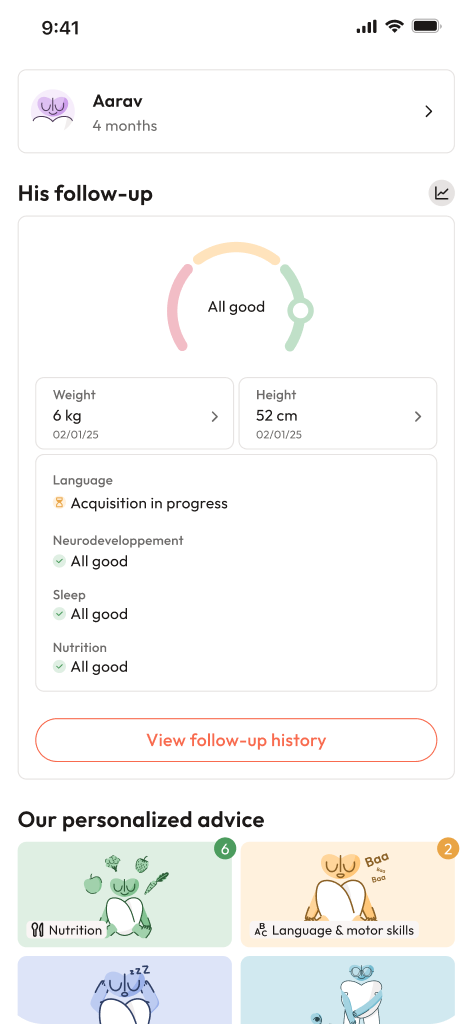Waiting for your second trimester ultrasound? That flurry of anticipation—sometimes edged with questions, a bit of anxiety, and the wish to glimpse your little one—can be both exciting and overwhelming. Many parents wonder: Is everything developing as it should? What unfolds during this detailed scan? And how can you prepare, both practically and emotionally? Let’s untangle the experience, spotlight what matters most for your baby’s health, and give you practical tips for every step of the process. From fetal anatomy scan essentials to decoding complex results, a clear path and empathetic guidance can make all the difference.
What Is the Second Trimester Ultrasound and Why Does It Matter?
The second trimester ultrasound, often known as the anatomy scan or 20-week scan, isn’t just a check-in; it’s a detailed survey, a full-body inspection for your baby, usually performed around 18–22 weeks of pregnancy. Ever wondered why this timing is standard? By now, your baby’s organs are well formed, and yet small enough for high-resolution images—think of it as the sweet spot for medical imaging.
What should you expect? A sonographer, armed with transabdominal ultrasound (occasionally supplemented by transvaginal ultrasound for specific cases), moves a probe gently over your belly, using gel as the medium for ultrasound waves to capture images. The session typically lasts between 30 and 45 minutes, sometimes longer if your baby is bashful, curled in odd positions, or the views are technically challenging.
- Fetal anatomy survey—the painstaking capture of images of your baby’s head, brain, spine, heart, kidneys, limbs, face, and more.
- Fetal biometry—precise measurements (head circumference, biparietal diameter, abdominal circumference, femur length) collectively guide the estimated fetal weight, helping detect whether growth is tracking as expected.
- Evaluation of the placenta (location, structure, cord insertion), amniotic fluid (a vital cushion and environment), and, sometimes, sex determination—if you wish, and only if baby’s position permits.
- Routine Doppler ultrasound is not always needed, but may be used to visualize blood flow if there are clues suggesting placental or fetal concerns.
Imagine a series of silent images first as the technician focuses, and then, usually, a summary at the end. If you find yourself anxious during a “quiet scan,” don’t hesitate to request initial reassurance once basic structures are spotted (“Can you see the heartbeat?”—a very common and reasonable question!).
How to Prepare: Practical and Emotional Guidance
No need for fasting or excessive water intake—unlike some early scans, a full bladder isn’t usually necessary for the second trimester ultrasound, unless your provider specifically requests. Comfort is key: soft, loose clothing gives easy access to your belly and can be adjusted in seconds.
A checklist for a smooth appointment:
- Avoid thick creams or oils on your abdomen in the 1–3 days beforehand—they can decrease image clarity.
- Bring along your previous ultrasound or genetic screening results, photo ID, referral information, and any insurance card.
- Jot down queries ahead—questions like, “Who will explain my results, and how will I get the report?” ensure no doubt lingers.
- Most clinics welcome one support companion; double-check if you’d like a spouse or loved one by your side.
- If you wish to know your baby’s sex, do mention it before the scan begins.
Lying on your back, maybe with a supportive pillow under your knees, you’ll be guided through the process. If any discomfort or nausea creeps in, speak up—small adjustments, or a shift in your position, can make a world of difference.
What Gets Checked During the Scan: A Closer Look at Fetal Well-being
Anatomy: Not Just a Quick Glance, But a Systematic Review
- Brain and Skull: Evaluation includes observing the shape, symmetry, ventricles (fluid-filled spaces), the midline structures like the cavum septi pellucidi, cerebellum, and cisterna magna. Any sign of abnormal shape or unexpected fluid triggers closer monitoring or further testing, such as a fetal MRI if needed.
- Spine and Skeleton: The sonographer will check for uninterrupted alignment and a continuous skin line—both reassuring signs.
- Face: Profile checks highlight the nasal bone, jaw, and upper lip; a cleft lip can sometimes be detected at this stage, though isolated cleft palate is trickier.
- Heart: The scan covers all four chambers, outflow tracts, and heart rhythm. If any irregularities pop up, referral for a specialist fetal echocardiography may be suggested.
- Abdomen and Organs: Confirmation of stomach, bowel, liver, and kidney function (like observing a filling and emptying bladder) offers reassurance about ongoing development.
- Placenta, Cord, Amniotic Fluid: The placenta’s location (anterior, posterior, low-lying), cord insertion, and fluid volumes are documented, with set thresholds prompting further review if values stray from normal.
- Limbs and Digits: Measurement of femur and other long bones, assessment of symmetry, finger, and toe count.
- Cervix and Uterus: If the cervix appears short, or history suggests risk, a transvaginal scan may provide a clearer picture.
Growth Patterns: The Bigger Picture
Biometry is more than a number; it’s a trend. Single, outlier values are interpreted in the light of multiple measurements, gestational age, and past scans. For example, a measurement below the 10th percentile might suggest growth restriction, especially if blood flow patterns (on Doppler) are also atypical. But often, consistent measurements within the 10th–90th percentile range provide comfort.
If you’re anxious about fetal weight estimation, remember: even the most precise calculations have a margin of error—usually around 10–15%.
Placental Health and Amniotic Fluid: Silent Guardians
A low-lying placenta (placenta previa) found on the anatomy scan may not spell trouble—placentas often “migrate” upwards as the uterus grows. Routine follow-ups are the norm, especially if placenta or fluid levels look borderline. Likewise, cord anomalies—like marginal or velamentous insertions—are noted and tracked, not cause for immediate concern but warranting follow-up.
Technology, Techniques, and Safety Considerations
Ultrasound Modes Explained
- 2D ultrasound is the mainstay: crisp, diagnostic black-and-white images.
- 3D/4D imaging comes into play for select views or if families desire a keepsake, but not as a diagnostic necessity.
- Doppler ultrasound–used sparingly–assesses blood flow through select vessels, especially if there are concerns for growth, preeclampsia, or twin pregnancies.
A quick note on safety: Ultrasound emits sound waves, not X-rays. Radiologists and sonographers adhere strictly to ALARA (As Low As Reasonably Achievable) principles, limiting scan duration and exposure, especially when using Doppler features.
When Is Doppler Needed?
Not always part of routine, but if certain risk factors exist—maternal hypertension, evidence of growth restriction, unusual placental patterns, or in complicated multiple pregnancies—Doppler studies add valuable insight.
Referral and Exam Levels
A basic Level I scan covers principal structures; referral for a targeted Level II scan or maternal-fetal medicine (MFM) consultation occurs if findings are complex, images are incomplete, or anomalies are suspected. Sometimes, a fetal MRI is requested for highly detailed views of the brain or thoracic structures.
Soft Markers, Anomalies, and What Comes Next
Understanding Soft Markers
A soft marker is not a diagnosis—rather, it’s a finding that nudges the probability ever so slightly for certain genetic conditions, such as a thickened neck fold or a small pinpoint echo within the heart (echogenic intracardiac focus). If a single, isolated marker is spotted, no immediate alarm—routine rescan or monitoring is generally all that follows. But two or more markers, or accompanying anomalies, may pave the way for genetic counseling or additional diagnostic work like amniocentesis.
Major Structural Anomalies
Detecting significant anomalies—like neural tube defects, major heart defects, kidney issues, or abdominal wall problems—triggers a streamlined pathway: targeted ultrasound, possibly fetal echocardiogram, genetic counseling, and, if warranted, specialized MRI. If necessary, care teams arrange delivery at hospitals fully equipped to support any additional needs at birth.
Image Quality and Scan Limitations: Not Always Perfect, But Clear Communication Matters
Sometimes, optimal images aren’t possible. Fetal position (hands hiding the face, back turned to the probe), low amniotic fluid, high maternal abdominal wall thickness, or scarring can all blur the view. Reports will mention these constraints. Most clinics support a return visit—a “completion scan”—rather than leaving anything ambiguous.
If views are limited or a finding is unclear, expect:
- Maternal repositioning or waiting for baby to move.
- Transition to transvaginal assessment when appropriate.
- Referral to a higher-level facility for advanced imaging if persistent uncertainty lingers.
Clear, plain language explanations, transparency about the scope—and limits—of the scan, and a step-by-step plan for next moves are essential. Always ask for clarification or summary in writing.
Special Situations: Embracing Complexity
Multiple Pregnancies
Twins, especially monochorionic (sharing a placenta), call for tailored attention—repeated growth checks, monitoring for twin-to-twin transfusion syndrome, and sometimes, advanced Doppler imaging.
Maternal Health and Special Circumstances
Conditions like gestational diabetes, hypertension, or autoimmune disorders, as well as pregnancies conceived with assisted technology, may require additional scans, sometimes at shorter intervals or focusing on specific organs (for example, the heart in diabetic pregnancies).
Placental Variations
A finding like placenta previa doesn’t immediately dictate delivery by C-section—placentas often shift away from the cervix as the uterus expands. More pressing, though rare, is a suspicion of placenta accreta spectrum—when the placenta attaches too deeply—and calls for expert maternal-fetal medicine input and coordinated delivery planning.
Interpreting Results and Next Steps
What Defines “Normal”?
A reassuring report means nothing unusual was seen, growth follows expected curves, and all key structures were captured. It doesn’t, however, guarantee that every possible disorder is ruled out. Some genetic or metabolic conditions won’t have visible signs at this stage, and certain anomalies become apparent later, requiring ongoing vigilance.
When Results Are Borderline or Abnormal
Common responses involve:
- Repeat or targeted advanced ultrasound (Level II) within 1–4 weeks.
- Specialist fetal echocardiography for the heart.
- Genetic counseling and, if indicated, DNA or amniocentesis tests.
- Consideration of fetal MRI for complex or hard-to-visualize structures.
Some findings will shape delivery plans, including timing, location, and which pediatric or neonatal teams are ready to help at birth.
Time, Cost, Logistics: Everyday Considerations
Appointment durations span 30–60 minutes (or longer for targeted exams). Insurance often covers those that are medically indicated—check carefully regarding policies for additional or non-medical scans. Bring all relevant paperwork and results from earlier tests. Feel free to raise practical questions regarding clinic policies, billing, and receiving your written report.
After This Scan: Comparing Trimesters and Continuing Care
- First trimester scans—mainly for dating, viability, and initial screening.
- Second trimester ultrasound—the pivotal, most comprehensive anatomy check.
- Third trimester scans—orient towards growth trends, monitoring fluid, placenta, and fetal position but revisit anatomy only if indicated by clinical changes.
Each stage brings its own insights and a unique form of reassurance or direction for further care.
Tips for a Positive Scan Experience
- Steer clear of creams and oils on your belly days before the scan—improves image crispness.
- Wear comfortable, loose clothing for hassle-free access.
- Write your core questions; clarity starts with your voice.
- Clarify guest and photography rules ahead of your appointment.
- If you’d like the baby’s sex known, express your wish early.
Express how you feel—if discomfort, anxiety, or uncertainty emerge, communication is key. Requesting early confirmation of heartbeat and movements can provide peace of mind. Always ask for a plain-language summary and the next action steps for any uncertain or abnormal finding.
Key Takeaways
- The second trimester ultrasound offers detailed, science-backed steps for assessing fetal well-being, anatomy, and growth, encompassing placenta, cord, and amniotic fluid evaluation.
- Measurements guide estimated fetal weight, interpreted with up to 10–15% variability; consistency across time matters more than a single data point.
- Doppler studies have their place—in specific medical situations, not as routine.
- Missed or unclear findings usually prompt a re-scan, rather than leaving unresolved questions.
- Transparency, preparation, and open conversation help make the journey both reassuring and empowered.
Professional support is always near. For personalized advice, clarity on reports, or health tools, consider downloading the application Heloa for tailored tips and free health questionnaires for your child.
Questions Parents Ask
How often does the 20-week scan find a major problem?
Most parents leave with relief—major structural issues occur in only a small percentage of pregnancies. Detected anomalies usually lead to detailed plans: a targeted ultrasound, perhaps a fetal echocardiogram, or referral to a maternal-fetal medicine specialist. Waiting for definitive answers can be tough, but clear pathways and support are available at each step.
What does the ultrasound report really say—how can I make sense of it?
Reports highlight why the scan was done, baby’s measurements (head circumference, biparietal diameter, abdominal circumference, femur length), estimated fetal weight, and a system-by-system summary. Notes on the placenta, cord, amniotic fluid, and cervix appear alongside a clear conclusion and, if applicable, suggestions for further steps or explanations for any incomplete images. Never hesitate to ask your healthcare team for clarification—a simple summary of the two or three most important points is reasonable to request.
How accurate is fetal sex determination at the second trimester ultrasound?
Often highly accurate, but only when the baby’s position, fluid, and visibility allow. Sometimes, the answer might be tentative—if knowing is important to you, let the sonographer know early. When 100% certainty is vital, non-invasive prenatal testing (cfDNA) or specific diagnostic procedures can clarify conclusively.
Should concerns or confusion arise after your second trimester ultrasound, reaching out to your clinical team for explanation and next steps is always welcome—they expect, and encourage, your questions.

Further reading:
- A pictorial guide for the second trimester ultrasound – PMC: https://pmc.ncbi.nlm.nih.gov/articles/PMC5029995/
- Sonography 2nd Trimester Assessment, Protocols, and … – NCBI: https://www.ncbi.nlm.nih.gov/books/NBK570574/









